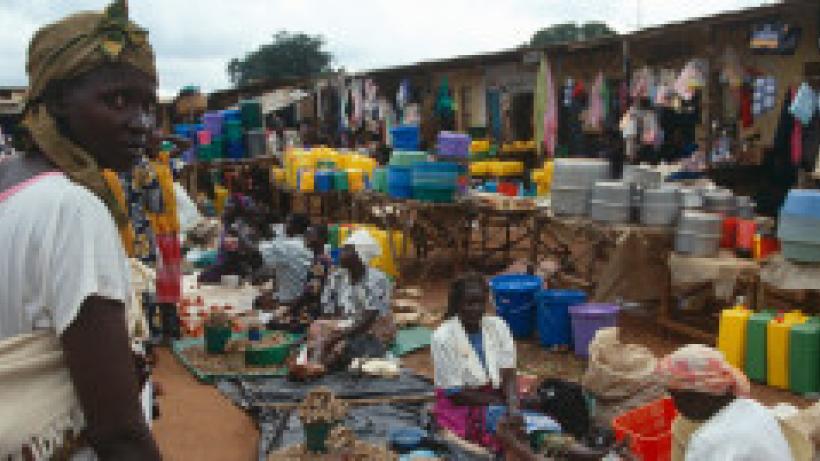
How bad data fed the Ebola epidemic
Misleading reports, speculation and poor projections from international agencies, government ministries and the media about the Ebola outbreak have exacerbated the problem
Misleading reports, speculation and poor projections from international agencies, government ministries and the media about the Ebola outbreak have exacerbated the problem
The West African Ebola outbreak first hit Sierra Leone in May 2014, followed by an explosion of cases in the capital Freetown in the autumn. The epidemic now counts more than 10,500[1] cases across Sierra Leone, with signs that the spread is slowing.
The early days of the crisis were characterized by a sense of immense fear, anxiety and alarm, regionally and globally. In Sierra Leone, a three-day, countrywide, military-led lockdown in September fed the fear in West Africa and beyond. Many flights originating in unaffected African countries were restricted. African students were prevented from attending some American schools, and there were countless reports of discrimination against Africans across the globe. Pictures of health workers in full protective suits became a ubiquitous symbol of the panic.
Misleading reports, speculation and poor projections from international agencies, government ministries and the media about the Ebola outbreak exacerbated the problem. The fear that was spread by the dramatic reports that accentuated the negative, undermined confidence, made it harder to encourage people to seek care, and misdirected attention away from Sierra Leone’s urban areas, where data suggest the economic effects of Ebola have been concentrated.
Valid, credible and timely data is essential during a global crisis. Without reliable data, efforts to assist affected people and to rebuild damaged communities can be misdirected and inefficient.
An early example of how data were presented misleadingly was the World Health Organization’s choice to report from April through August that the death rate from Ebola was “up to 90 percent,” when the actual death rate of this outbreak from confirmed cases, even in the early days in March 2014 in Guinea, was about 70 percent — still hardly reassuring, but better than almost-certain death. Warning people of likely death is not a good way to encourage them to seek care.
Both the W.H.O. and the Centers for Disease Control and Prevention misjudged how the disease would evolve. Initially slow to appreciate the severity of the outbreak, the W.H.O. and the C.D.C. subsequently overestimated likely cases. The C.D.C. projected that up to 1.4 million people in Liberia and Sierra Leone could be infected by January 2015. (As of Jan. 27, 19,140 cases have been reported across the two countries.)
Inaccurate and implausible claims about the economic impact further reduced the public’s confidence, which had its own economic consequences.
For example, in August, a senior Sierra Leonean government official was reported as saying his country’s Gross Domestic Product had fallen by 30 percent, a figure that was implausible considering the crisis was only a few months old and that even during Sierra Leone’s devastating civil war real G.D.P. fell only by an average of 5 percent a year.
In October, the World Bank estimated that the costs associated with Ebola for West Africa as a whole may be as high as $32.6 billion, an estimate that was revised down this month to be at most $6 billion. When the public anticipates bad times, they cut back on discretionary purchases and save more, compounding the effects of the shock.
Meanwhile, the local and international press was full of reports of skyrocketing food prices, while surveys undertaken by the International Growth Center and Innovations for Poverty Action of markets across Sierra Leone (conducted monthly from August through December 2014) showed food prices in line with previous years.
One problem with doomsday scenarios is that when reliable data is finally released — as they were this month — the real figures can seem small and insignificant relative to earlier predictions.
They are not. In Sierra Leone, the urban areas in particular have been badly hit. The percentage of household heads “not working in the previous week” rose from 25 percent in July/August to 33 percent in November. This reduction in employment is taking place in one of the poorest countries in the world with few formal safety nets. Just over a quarter of household heads work in non-farm household enterprises in which revenues are down by 40 percent over this period, and the six-month failure rate of these businesses tripled.
The informal economy is particularly vulnerable to the fear that is stoked by bad data. When the future is uncertain people cut back on small luxuries like purchasing snacks on the street or having their hair done, yet these discretionary purchases are the mainstay of the non-farm enterprise sector. This sector has also been hit badly by government restrictions on transportation, markets, bars and restaurants.
Why were projections so bad? Partly because it is hard to collect good data in a crisis. But also, we believe, because dramatic headlines make for a better story. Agencies face asymmetric incentives: They are likely to face more criticism for underestimating rather than overestimating the impact of an emergency. As they scramble to raise funding for a crisis in a world grown weary of alarm calls, the temptation is to focus on the upper range of plausible estimates.
But collectively focusing on worst-case scenarios can make people fatalistic, damaging efforts to prevent the disease from spreading. It also has a negative effect on the economy and makes it harder for those seeking to raise money for future crises. Independent data sources and assessments are vital to our understanding of and response to the crisis.
There is real suffering in Sierra Leone today and a lot the international community can do, but we need to be clear- sighted and level-headed about the problems if we are to help effectively.

